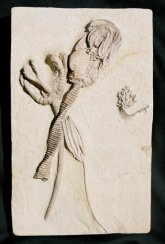| |
�����������������������������������������������������������������������������������������������������������������������������������������������������������������������������������������������������������������������������������������������������������������������������������������������������������������������������������������������������������������������������������������������������������������������������������������������������������������������������������������������������������������������������������������������������������������������������������������������������������������������������������������������������������������������������������������������������������������������������������������������������������������������������������������������������������������������������������������������������������������������������������������������������������������������������������������������������������������������������������������������������������������������������������������������������������������������������������������������������������������������������������������������������������������������������������������������������������������������������������������������������������������������������������������������������������������������������������������������������������������������������������������������������������������������������������������������������������������������������������������������������������������������������������������������������������������������������������������������������������������������������������������������������������������������������������������������������������������������������������������������������������������������������������������������������������������������������������������������������������������������������������������������������������������������������������������������������������������������������������������������������������������������������������������������������������������������������������������������������������������������������������������������������������������������������������������������������������������������������������������������������������������������������������������������������������������������������������������������������������������������������������������������������������������������������������������������������������������������������������������������������������������������������������������������������������������������������������
|
 |
������������������������������������������������������������������������������������������������������������������������������������������������������������������������������������������������������������������������������������������������������������������������������������������������������������������������������������������������������������������������������������������������������������������������������������������������������������������������������������������������������������������
|
Name:
Multiple Crinoid Plate
Age: Mississippian
Formation: Edwardsville Formation
Location: Crawfordsville, Indiana
Size: Two largest crinoids are about 8" long
This specimen is not for sale
Click here for similar specimens that are for sale
This is one of the most impressive crinoid plates we have ever seen. It is a multiple slab of HUGE crinoids from Crawfordsville, Indiana. There are four crinoids on this plate - all of different types. A fine Hylodecrinus gibsoni is positioned on the right of the slab. This inadunate crinoid has nice, multi-branching arms and a nice length of stem attached. A beautiful Parascytalocrinus hamiltonensis is located at the bottom of the plate. This inadunate crinoid has a small, bowl-shaped cup and very stout, uniserial arms. This 3-dimensional specimen exhibits wonderful detail and an extremely long stem. On the left side of the plate is a large Onychocrinus ulrichi with extremely long stem. This flexible crinoid has a multi-plated base with five stout arms that branch only once near the tips. The arms of this crinoid have tiny ramules that aided in the food-gathering process - the ramules are easily seen on this specimen. But the real prize on this plate is the center crinoid, Platycrinites saffordi. This camerate crinoid has a cup composed of large, ornamented plates and heavily pinnulated, biserial arms - this 3-dimensional specimen exhibits all of these features in fine fashion. The plate structure of the crinoid is clearly defined, and the long arms, with their many pinnules, are beautifully displayed. But the striking feature of this crinoid is the unique, twisted, ''corkscrew'' stem (indicative of the genus) still tightly attached to the base of the cup! But that's not all - there is a large gastropod, Platyceras, attached to the cup. This gastropod fed off the excrement from the crinoid, and in doing so, kept the environment clean so that the crinoid could keep living. This is a rare example of a true symbiotic relationship in the fossil record. Wow! All of the crinoids are extremely 3-dimensional and are totally natural to the plate - none of the specimens have been composited or ''added on''. The echinoderms are wonderfully spaced on the rectangular display plate of siltstone. This is easily one of the best crinoid fossils we have ever offered. It is a textbook example of four different fossilized crinoids from the Mississippian inland sea.
|
|
������������������������������������������������������������������������������������������������������������������������������������������������������������������������������������������������������������������������������������������������������������������������������������������������������������������������������������������������������������������������������������������������������������������������������������������������������������������������������������������������������������������������������������������������������������������������������������������������������������������������������������������������������������������������������������������������������������������������������������������������������������������������������������������������������������������������������������������������������������������������������������������������������������������������������������������������������������������������������������������������������������������������������������������������������������������������������������������������������������������������������������������������������������������������������������������������������������������������������������������������������������������������������������������������������������������������������������������������������������������������������������������������������������������������������������������������������������������������������������������������������������������������������������������������������������������������������������������������������������������������������������������������������������������������������������������������������������������������������������������������������������������������������������������������������������������������������������������������������������������������������������������������������������������������������������������������������������������������������
|


